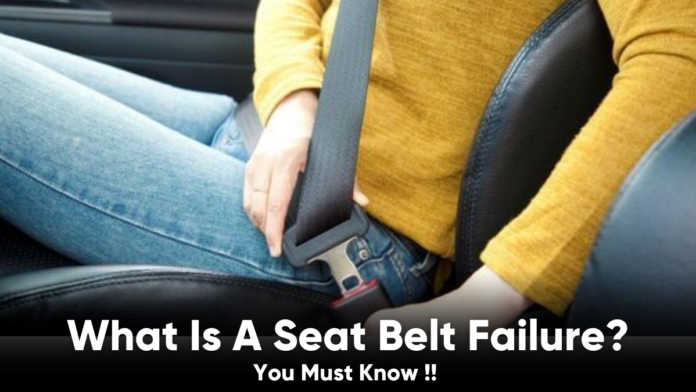When planning a lengthy car trip, passengers and drivers must never overlook the necessity of wearing seat belts. Here’s an explanation of what a seat belt failure is and how to show it.
- Putting on a seatbelt turns out to be a most prudent safety precaution
- Seat belt usage in passenger automobiles can save deaths
- Check out the given narration to understand seat belt failure!
It’s no surprise that seat belts are important safety measures in any vehicle. Flaws in the system demand expert attention, given the important role it plays in a driver’s and passenger’s safety on the road. However, such seat belt failures can result in injury and even death. While some flaws are more obvious, others are more difficult to detect. However, this article will focus on the most common causes of a malfunctioning seat belt, ensuring that it functions properly regardless of the driving conditions.
What can cause a seat belt failure?
The list below concentrates on the most common seat belt failures that have serious consequences, and once you’ve figured out the root problem (which is tough), you can show how to fix it! You may also hire a qualified technician to look for assembly flaws, bad design, manufacturing flaws, and other issues. They may then illustrate what causes the problems and assist you in troubleshooting the issue. So, rather of spending any more time, let’s take a look at the core reasons of seat belt failures.
1. Retractor Failure
One of the most critical components is the seat belt retractor. It gets designed to lock the seat when experiencing sudden forces during road trips. That even secures the seat belt in the right position, preventing the passenger and driver from leaning towards the front when the vehicle runs into forceful impacts. And retractor failure can be one common sign that results in seat belt failures.
2. Spooling
While seat belt webbing can extend excessively, it would not provide utmost security to ensure driver’s or passenger’s safety inside the car. It’s related to the fault retractor because it slackens the seat belt rather than tightens it before going to the sudden stop. That, in turn, makes it a disastrous problem that you require addressing soon after you spot that out.
3. Latch Failure
A latch gets characterized as a crucial contact point, thereby linking the belt and buckle. Thus, the responsibility is as paramount as a retractor. (elcapitalino) It might fail to lock your seat belt without a completely functional latch. Meaning it fails to offer proper protection during a car crash.
Here are more causes of seat belt failures:
- Assembly and manufacturing errors & defects
- False latch (if the latch gets completely inserted into a buckle, but a lock isn’t secure)
- Defective design
- Faulty material used in your seat belt webbing
- Retracting errors that create slack in a belt
- Detaching from the anchor points as well as mounts
- When the buckle gets accidentally unlatched (flying objects and force causes it)
What Are The Injuries That Occur Due To The Seat Belt Failure?
The vehicle collision’s velocity and seat belt’s nature play a significant role in the injury types. However, malfunctioning seat belts may directly cause or even exacerbate injuries. Multiple injuries from minor cuts & bruises, spinal cord injuries, and other drastic injuries may result from failure in the seat belt. Some of the most common injuries contribute to the following injuries:
- Fractured bones
- Contusion
- Quadriplegia
- Brain injury
- Internal damage in organs
- Spinal cord injury
- Head trauma
- Paraplegia
- Death or other fatal injuries
A faulty seat belt may be a sign of a lot of things, but there is one thing that you must always keep in mind: a defective seat belt’s dependability and efficiency might put several risk factors in your life. So, in case you have any problems with your seat belt, it’s the right time to get professional assistance to verify it is safe to use when on the road.
Now that you have understood the various aspects of seat belt injuries and failure, do you think your car’s seat belts need a repair or replacement? If yes, then it’s the right time to consult the professional today.







